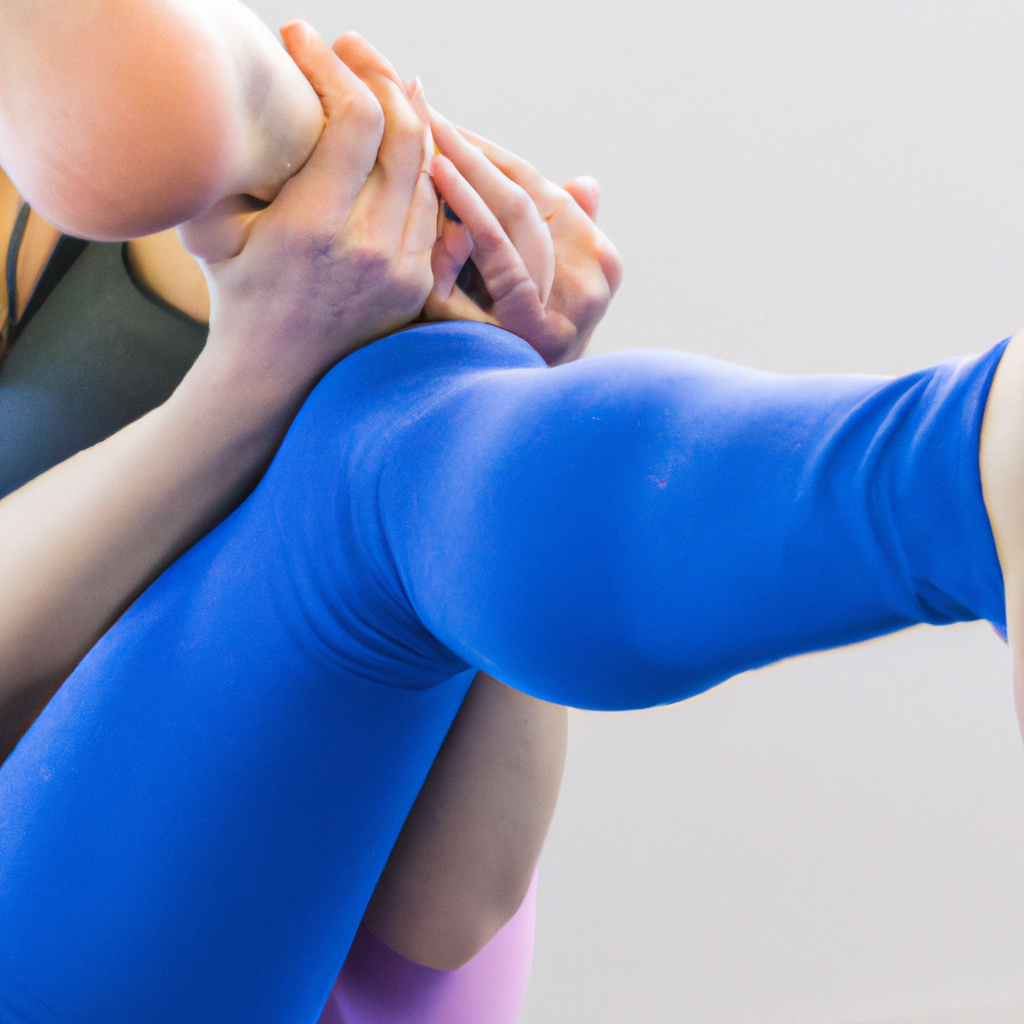Staying active and in shape is a great way to ensure your body keeps functioning at its best. But do you ever think about stretching before you start your workout? Incorporating stretching into a workout session can help to optimize flexibility and reduce the risk of injuries. In this article, we explore the importance of stretching as an important exercise component and how it can help you reach your fitness goals in a safe manner.
1. Benefits of Stretching: Enhancing Flexibility and Injury Prevention
Stretching is an essential part of any exercise regime and offers numerous benefits to health and wellbeing. From increasing flexibility and mobility, to injury prevention and improved performance, stretching is a key component for optimizing physical activity.
The two main benefits of stretching are enhancing flexibility and preventing injury.
- Enhanced flexibility may result in improved posture, which can benefit overall posture. Increased flexibility may also reduce the risk of sustained injuries associated with a tight muscle or tendons.
- Injury prevention can be achieved through stretching as it reduces the risk of muscular tears and strains. Regular stretching before exercise helps by preparing the muscles for physical activity, minimising the risk of pull or strain.
Stretching can also aid in improving and maintaining balance and stability. Unbalanced muscles may lead to pain or discomfort while running, jumping or other activities.
Since it only takes a few minutes a day, stretching is simple to incorporate and adds immense value for anyone exercising regularly. Interested parties can start by visiting a trained physio for advice on how to safely complete stretching exercises.
2. The Science of Using Stretching as an Exercise Tool
Stretching is a time-honoured exercise tool, commonly used in physical fitness and other activities to promote better flexibility and range of motion. Here, we’ll look at the science behind stretching as an exercise tool – what it does for our bodies and how it can help make us more active and alert.
- Activates and Warms Up Muscles: Stretching helps to activate and warm up the muscles in your body, making them more receptive to exercise. It encourages circulation, by releasing waste products and toxins, and helps to prepare the muscles for physical activity.
- Improves Flexibility: Regular stretching helps to increase the range of motion around joints, and reduces the risk of injury. It helps the body to ease into physical movements, by extending the range of motion in our muscles, ligaments, and tendons.
- Feeling Good: Stretching helps to relax the mind and body, and reduce stress and tension. It’s great for relieving sore muscles and can help to improve posture and concentration. It also promotes body awareness and can help improve overall fitness and strength.
Stretching is an important exercise tool which can have numerous benefits for both physical and mental health. The science behind it is clear – it can help to make us more active, reduce muscle tension and injury risk, and promote good physical posture and circulation. So, take the time to make stretching part of your daily routine, and feel the difference!
3. Best Stretching Practices for Maximum Benefit
Stretching is an important component of any fitness or exercise program and can provide numerous benefits. To get the most out of your stretching routine, consider the following best practices:
- Always warm up your muscles before stretching. This will help you avoid injury and make the stretches more effective.
- Never stretch too far. Stretching should not cause pain. If you feel pain, back off on the stretch.
- Hold each stretch for a minimum of 30 seconds. This will ensure the muscle fibers are stretched effectively.
- Use correct form. Keeping the spine straight, core engaged and proper breathing will help you get the most out of each stretch.
Static Stretching is the most common type of stretching and involves slowly extending the muscle to a point of tension and holding it there for a set period of time. This can help improve flexibility, range of motion, and reduce the risk of injury. Examples of static stretching include: forward fold, shoulder stretch, triceps stretch, calf stretch, and hamstring stretch.
Dynamic Stretching is an active form of stretching that involves constantly moving the body part through its range of motion. This can help increase mobility, firing up the nervous system and prepare the body for activity. Examples of dynamic stretching include: arm circles, leg swings, lunges, inchworms, and knee hugs.
Foam Rolling is a type of self-myofascial release whereby a person uses a foam roller or other device to massage the muscles and tissue. Foam rolling increases circulation, improves flexibility and helps relieve muscle tension. This can help prevent injury and speed up the healing process.
4. Stretching for Healthy Living: The Ultimate Guide
Stretching for healthier living can make a huge difference in your daily life. Being able to move freely and comfortably is essential for an active lifestyle, and stretching can help you achieve that. From greater flexibility to improved posture, stretching can extend your range of motion and bring a number of benefits.
1. Increase Flexibility – Regular stretching can increase the flexibility of many muscles in your body, allowing you to perform daily activities more easily. This is especially important for athletes who need to perform certain moves quickly and accurately. Stretching can also help reduce the risk of injuries caused by muscle tightness or sudden movements.
2. Improves Posture – Practicing proper stretching techniques can help improve your posture. A great starting point is to focus on the chest and back muscles, two common areas of tension and imbalance. To correct these issues, try simple stretches such as the shoulder squeeze or chest opener, and then move to more dynamic exercises like reach and rollovers.
3. Reduce Stress – Stretching can help you reduce stress and improve your mental well-being. A few minutes of gentle stretching can increase your energy and reduce muscle tension. You can even practice deep breathing to further reduce stress and promote relaxation. Of course, don’t forget to get adequate rest and exercise to promote overall health.
4. New Routines – To get the most out of stretching, make it part of your daily routine. For example, you can start your day by doing some arm and leg stretches to work your major muscle groups. Or incorporate stretching into your yoga practice to maximize the benefits of each pose. The important thing is to find a routine that works for you and stick to it.
Flexibility is important for both performance and health. Incorporating stretching exercises into your exercise routine is a great way to increase your flexibility, making you stronger, healthier and less likely to experience an injury. So take the initiative and stretch your way to a fit and healthy lifestyle!





